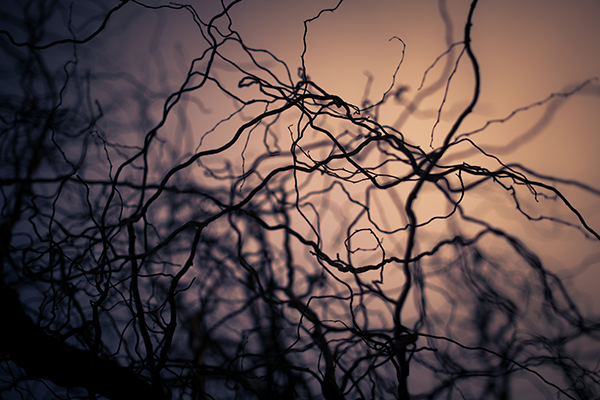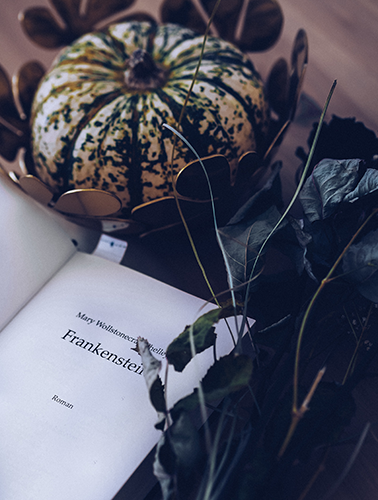by Arthur Paul Patterson
MARY SHELLEY'S NOVEL Frankenstein has more to do with everyday relationships than with the misuse of science or how to enjoy a good "gore fest". It is Horror but its ghoulishness involves the way we treat each other and how self-centered we can be when chasing our ambitions. I prefer to watch Nightmare on Elm Street than view my own monstrous ways of relating to others. Mary's novel won't allow me that kind of distraction.

image by Tim Mossholder
I imagine that I live in a shadowy theatre where an unbelievably frightening scene is about to overwhelm me. I have the choice of putting my hands in front of my eyes or looking directly into the gruesome screen. "If it scares you so much, why look?" you might ask. I look because there are eye-opening benefits in being horrified. To confront horror enables me not only to test my courage but to check my discernment, that is, my ability to see through things. What is it that I am really afraid of? Is it the scarred monster conjured up on the screen that frightens me or my dread of not being in control of what happens moment by moment? Or is it my fear that I am ugly, miserable and sometimes violent? Is there anything in my life that is actually worth being horrified or scared of? How do I relate profitably to my nature without either denying or being engulfed by its dark side? Mary's novel keeps me posing questions.

Image by Laura Chouette
There is another way of reading or viewing horror which keeps us blind to the value of being horrified. Earlier I mentioned Nightmare on Elm Street. While it may have some value in clarifying adolescent transition, I consider it sub-horror or part of the "slasher" genre. Slasher enables us to see without recognizing ourselves at all. If we allow exaggerated savagery and blood lust to distract us from genuine fear, horror becomes vulgarity or stupidity. If we expose ourselves to monsters so hideous they become hilarious then horror becomes comedy. The film history of Frankenstein: or the Modern Prometheus is replete with degrading parodies on the original book. Film director James Whale and Boris Karloff may have started the trend in Whale's reinterpretation of Frankenstein in 1931. He made the monster into a grunting buffoon, so sub-human it couldn't talk, never mind quote Milton. Whale's version of the monster was used to demonize anyone who was of another race or ideology. The Creature was so unlike ourselves that when we looked at him we saw no correspondence, nothing of our nature.
There are some benefits in watching Frankenstein as comedy. By looking at a horrific scene-turned-hilarious, we give ourselves permission to laugh and not take our foibles quite so seriously. We project ourselves onto the screen and belly laugh at what would normally be enough to crush us. Better to titter at it, joke about it, and allow horror to creep part way up our throats even if only in the form of a joke. Better that than to not see horror at all, to live in the giddy bliss of sunshine with a heart full of malevolence. Young Frankenstein or Vampire in Brooklyn are perhaps our best bets when in need of this sort of horror fare.
If you are worried about "grossing the kids out," I have lately discovered that the PBS series Wishbone will introduce children to Frankenstein without terrifying them beyond their developmental stages. Wishbone is a little dog who enters the classics of literature in a way that children can understand. Surprisingly, Wishbone has entered Frankenstein in the episode called "Frankenpaw". Dr. Jekyll and Mr. Hyde (Robert Louis Stevenson) and The Purloined Letter (Edgar Allen Poe), are also featured by Wishbone.
As you read the essays in our series on Frankenstein (coming soon), imagine yourself on holidays, perhaps around the campfire. In this way, you will be following the example of Mary Shelley and her romantic friends telling tales of horror and macabre. In the summer of 1816 they sought to open each other's eyes wide in horror and in transformation. Mary invites us to follow her:

image by Bruno Guerrero
